In the lush rainforests and swamps of Central and South America, an extraordinary evolutionary feat takes place daily. Small lizards dash across water surfaces with the same ease that humans walk on land. These remarkable reptiles, known as basilisk lizards, perform what seems like a magic trick—running on water without sinking. Their incredible ability has earned them the biblical nickname “Jesus lizards” and fascinated scientists and nature enthusiasts alike. This water-walking capability isn’t just an impressive party trick; it’s a sophisticated survival adaptation that showcases nature’s ingenious problem-solving. Let’s dive into the world of these extraordinary creatures that defy the laws of physics through evolutionary adaptations.
The Basilisk Family: Meet the Water Walkers
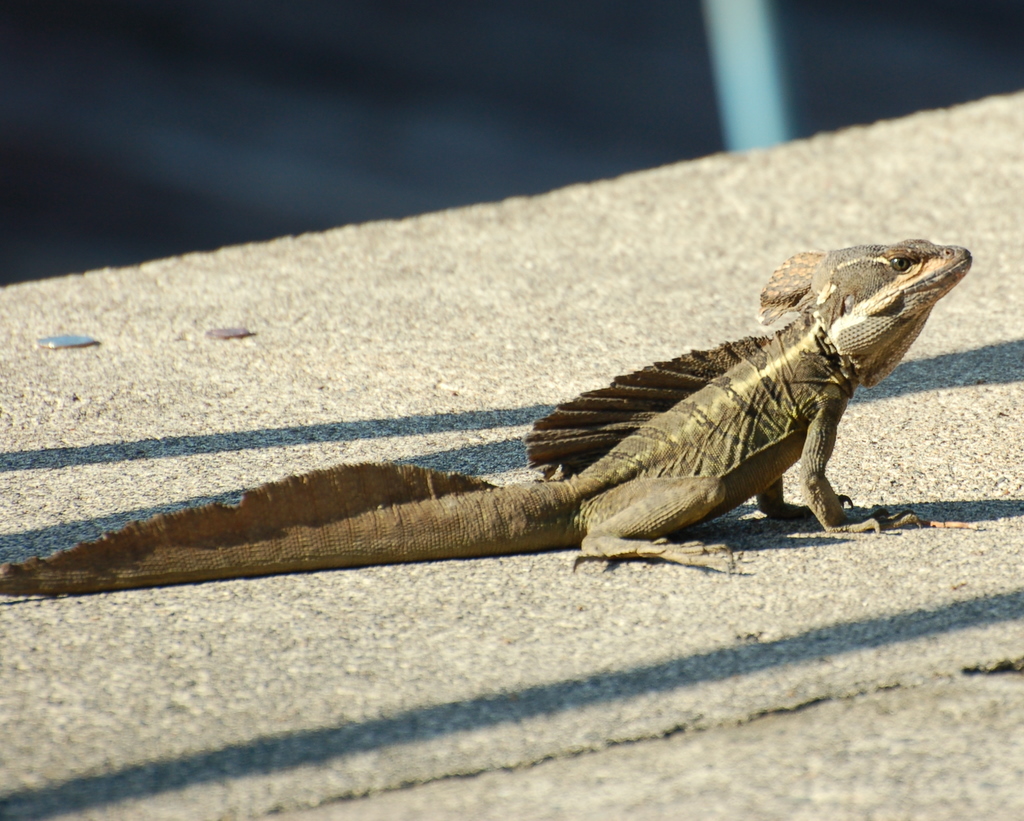
The water-walking lizards belong to the genus Basiliscus, which includes four distinct species: the common basilisk (Basiliscus basiliscus), the green basilisk (Basiliscus plumifrons), the red-headed basilisk (Basiliscus galeritus), and the brown basilisk (Basiliscus vittatus). These reptiles are members of the larger Corytophanidae family, commonly known as casquehead lizards. Each species has evolved the remarkable ability to run across water surfaces, though they differ in coloration, size, and specific habitat preferences. The green basilisk, with its vibrant emerald coloration and distinctive head crest, is perhaps the most recognizable of the water-walking lizards, while the common basilisk boasts impressive size, with males reaching up to 2.5 feet in length including their tail.
The Physics Behind the Miracle
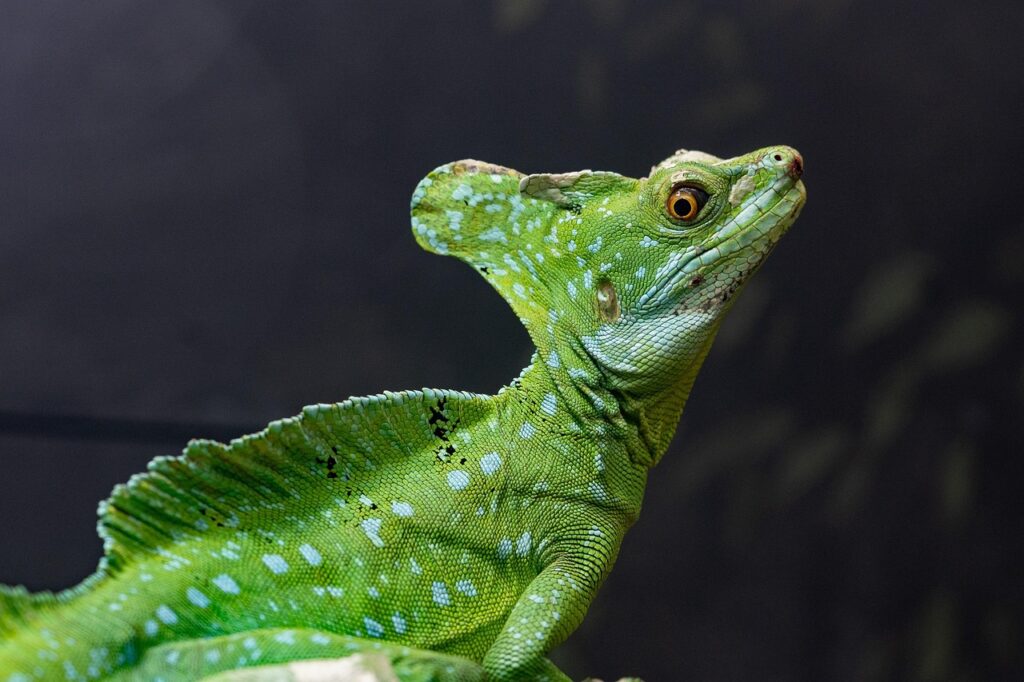
The basilisk’s water-walking ability isn’t supernatural—it’s pure physics brilliantly applied through evolution. When running on water, these lizards utilize a combination of surface tension, air pockets, and remarkable speed to stay above the water’s surface. Their specially adapted feet feature fringed scales that unfold upon impact with water, dramatically increasing surface area. As they strike the water’s surface, they create a small air pocket beneath each foot, providing temporary support before gravity takes over. To maintain this effect, basilisks must keep moving at incredible speeds—up to 5 feet per second—taking up to 20 steps per second. This high-speed movement prevents them from breaking through the surface tension and sinking, effectively allowing them to “run” across water for distances of 15 feet or more before they either reach land or slow down and begin to swim.
Anatomical Adaptations for Water Running
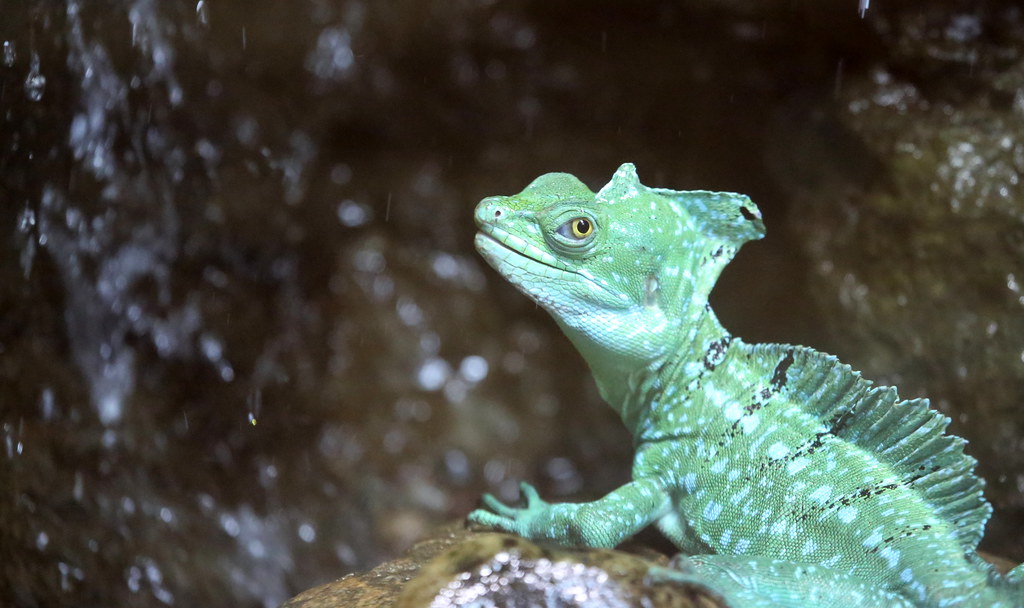
The basilisk’s ability to run on water stems from several specialized anatomical features evolved specifically for this purpose. Their most notable adaptation is their uniquely designed feet, which feature elongated toes with fringed scales along the edges. These scales act like miniature flippers that unfold upon contact with water, dramatically increasing the surface area of each foot. Additionally, basilisks possess powerful hind legs with specialized muscles that generate the explosive force needed for their water-running sprints. Their lightweight body structure also contributes to this ability, as a heavier animal would break the water’s surface tension more easily. These lizards also have a streamlined body and a long, counterbalancing tail that helps them maintain stability while racing across the water surface at high speeds.
The Green Basilisk: The Most Accomplished Water Runner
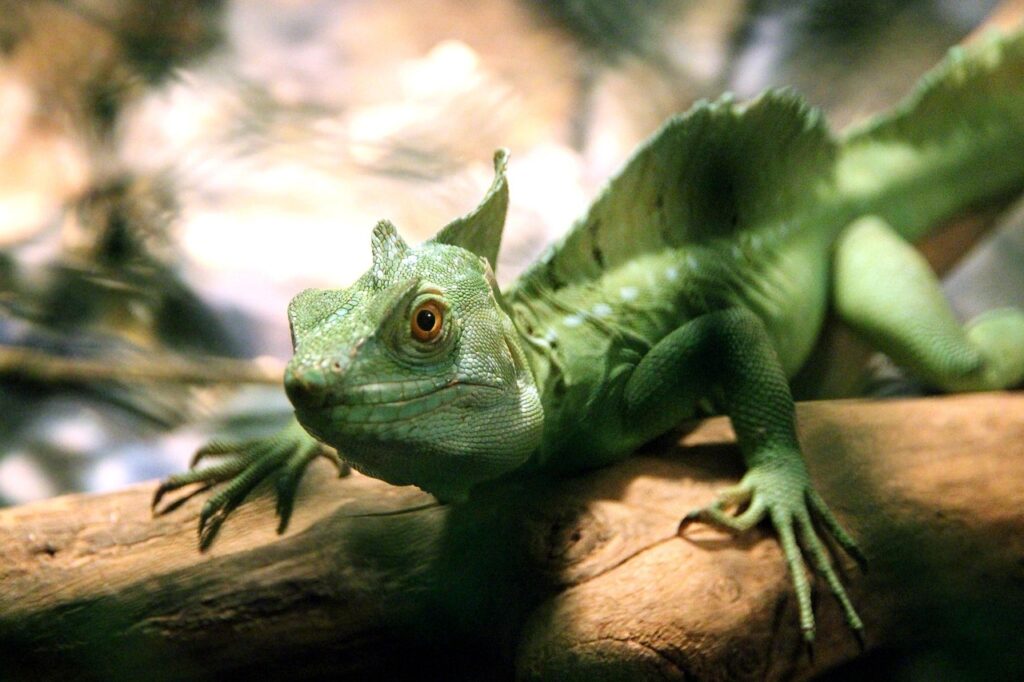
While all basilisk species can run on water, the green basilisk (Basiliscus plumifrons) has perfected this skill to an art form. Sporting a brilliant emerald color with blue and yellow accents, these lizards are native to rainforests from southern Mexico to northern Colombia. Males develop three distinctive crests—on the head, back, and tail—giving them a prehistoric, dragon-like appearance that likely inspired their mythological naming.
Green basilisks are particularly adept at water running due to their proportionally larger feet and powerful hind legs, allowing even adults weighing up to 200 grams to perform this feat. Their water-running ability is so advanced that they can transition seamlessly from land locomotion to water running when escaping predators, making them true masters of this remarkable evolutionary adaptation.
The Jesus Lizard: Origins of a Biblical Nickname
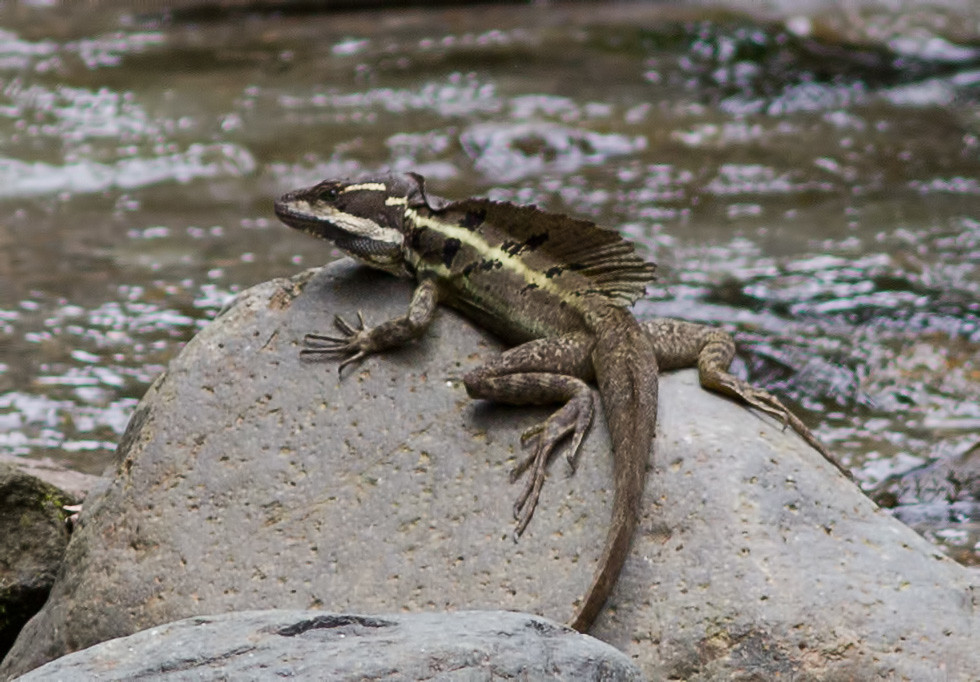
The basilisk’s common nickname, the “Jesus lizard,” directly references the biblical account of Jesus Christ walking on water in the New Testament. This name emerged when European explorers and naturalists first encountered these lizards in Central America and were astonished by their seemingly miraculous ability. Despite the religious connotation, the name has stuck and become widely used even in scientific contexts and nature documentaries. The nickname particularly gained popular recognition after a 1983 National Geographic feature showcased the lizard’s remarkable ability, cementing its place in popular culture. It’s worth noting that while Jesus’s water-walking is described as a miracle in the Bible, the basilisk’s ability is entirely natural—a product of millions of years of evolutionary adaptation to escape predators in its rainforest habitat.
Developmental Differences in Water Running
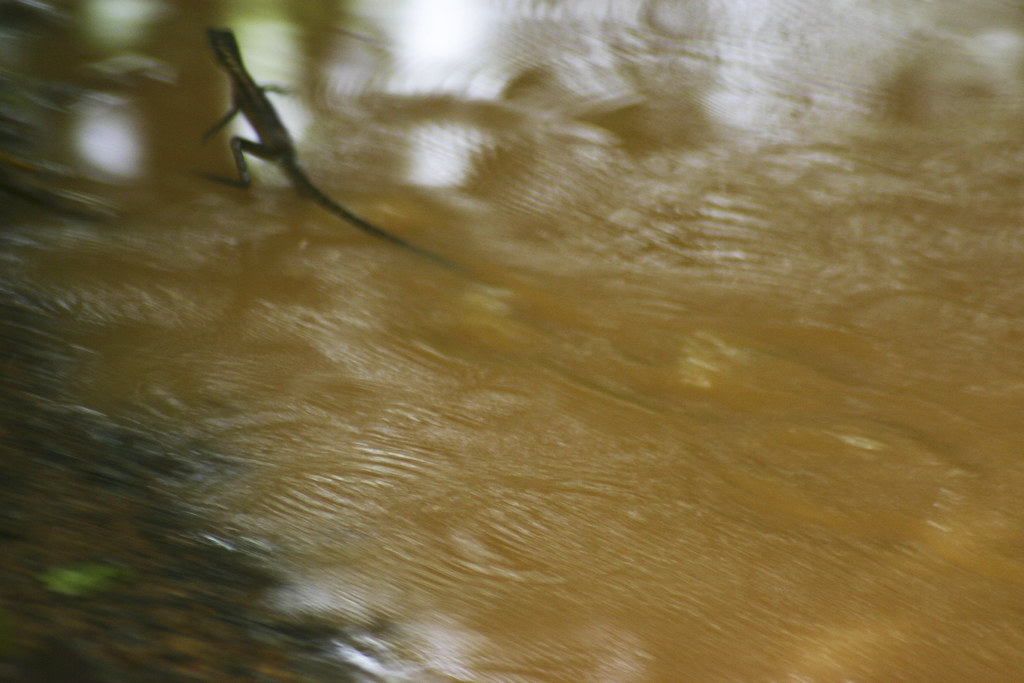
The ability to run on water varies significantly throughout a basilisk’s life cycle, with younger lizards generally being more proficient than adults. This difference stems primarily from the relationship between body mass and foot surface area. Juvenile basilisks, being lighter, can run across water with relative ease, as their weight-to-surface-area ratio is more favorable for water running. As basilisks grow larger and heavier, particularly the males with their elaborate crests, this ability becomes more challenging and requires greater energy expenditure. Adult basilisks weighing over 200 grams may still run on water, but they typically cannot sustain this movement for as long as their younger counterparts. This ontogenetic shift in ability showcases how physical constraints can affect the expression of specialized adaptations throughout an animal’s life cycle.
Habitat and Geographic Distribution

Basilisk lizards inhabit the tropical and subtropical regions of Central America and northern South America, with their range extending from southern Mexico to Ecuador and Colombia. These semi-aquatic reptiles thrive in rainforest environments with abundant water sources, typically making their homes near streams, rivers, and ponds where they can utilize their water-running abilities.
Different species occupy slightly different niches within this range—the brown basilisk has expanded its territory into Florida as an invasive species, while the green basilisk remains more strictly confined to pristine rainforest habitats. Their preference for waterside habitats directly connects to their evolutionary adaptations, as the ability to run on water provides a critical escape route from terrestrial predators. Despite their aquatic prowess, basilisks are primarily arboreal, spending much of their time in trees and descending to water only for feeding, crossing waterways, or escaping threats.
Diet and Feeding Behaviors
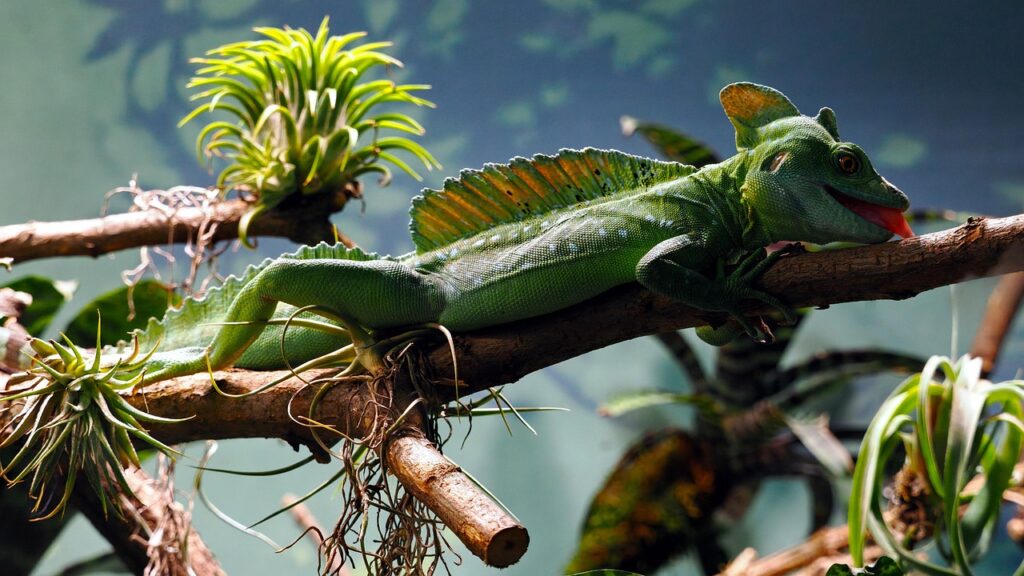
Basilisk lizards are opportunistic omnivores with a diet that showcases their adaptability across different environments. These versatile feeders primarily consume insects such as beetles, grasshoppers, and ants, but will readily expand their menu to include small vertebrates like fish, frogs, lizards, and even small birds when available. Plant matter, particularly berries, flowers, and leaves, also comprises a significant portion of their diet, especially during seasons when animal prey may be scarce. Their feeding strategy often involves patient stalking followed by quick, precise strikes to capture prey—a hunting method that utilizes their excellent vision and rapid reflexes. Interestingly, basilisks sometimes employ their water-running ability not just for escape but also for hunting, allowing them to chase prey across water surfaces or quickly traverse streams to access food resources on the opposite bank.
Reproduction and Life Cycle
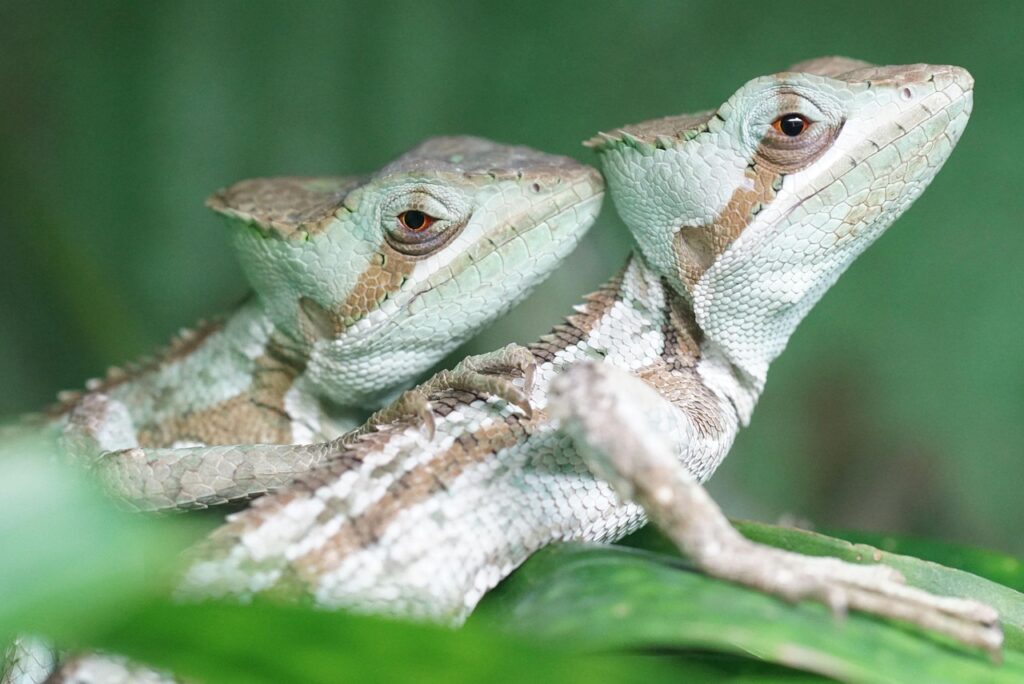
The reproductive cycle of basilisk lizards follows patterns typical of many tropical reptiles, with some fascinating specific adaptations. Males establish and vigorously defend territories, using their impressive crests for visual displays to attract females and intimidate rival males. After mating, female basilisks lay clutches of 5-15 eggs in shallow nests dug into soil, often hidden under leaf litter near water sources.
Unlike some reptiles, basilisks do not provide parental care after egg deposition, leaving the hatchlings to fend for themselves. Incubation typically lasts 8-10 weeks, depending on environmental temperatures. Perhaps most remarkably, hatchling basilisks emerge from their eggs already equipped with the ability to run on water—a crucial survival skill that they can employ immediately upon hatching without any learning period. This innate capability provides the vulnerable juveniles with an instant escape mechanism from the numerous predators that target them.
Predators and Defense Mechanisms

Despite their impressive water-walking abilities, basilisk lizards face numerous threats from predators in their tropical habitats. Birds of prey, snakes, larger lizards, and mammals like coatis and raccoons all actively hunt basilisks of various ages. Their primary defense mechanism is, of course, their remarkable ability to sprint across water surfaces to escape terrestrial threats—a strategy that proves particularly effective against predators that cannot follow them across water bodies.
Beyond water running, basilisks also employ camouflage, with their green or brown coloration helping them blend into foliage. When cornered, these lizards can exhibit more aggressive defensive behaviors, including inflating their throat pouches to appear larger, hissing, and even biting if handled. Some basilisks will also dive underwater and remain submerged for up to 30 minutes, using air pockets in their nostrils to breathe while hiding from threats above the surface.
Conservation Status and Threats
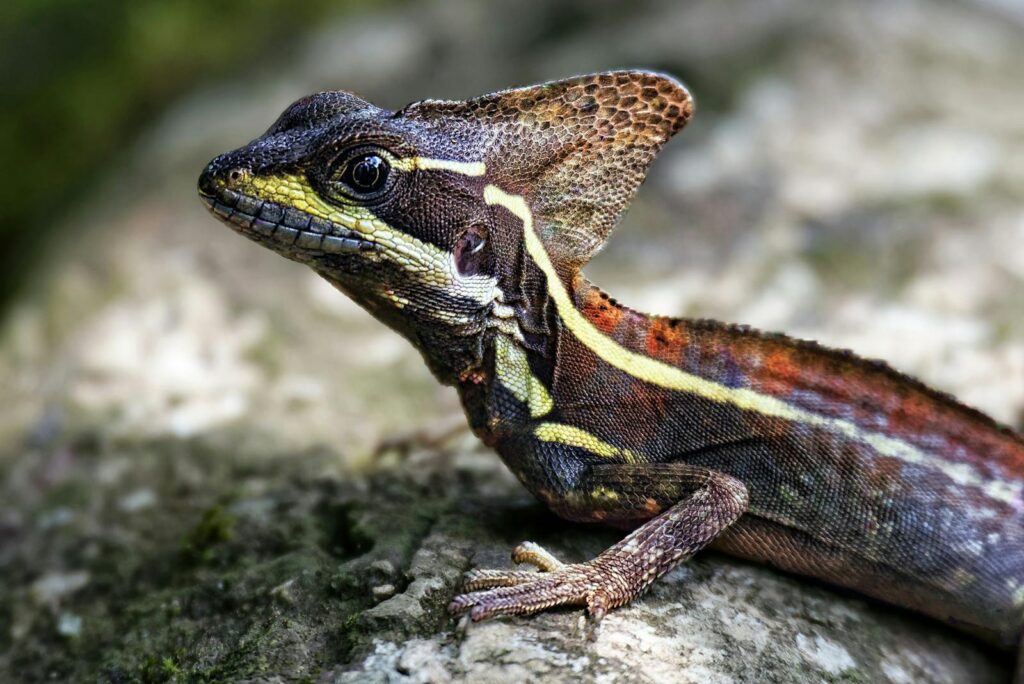
While basilisk lizards are not currently listed as endangered or threatened on the IUCN Red List, they face increasing pressures that warrant conservation attention. Habitat destruction through deforestation represents their most significant threat, as the clearing of rainforests for agriculture, logging, and development directly eliminates their specialized habitat. Water pollution also poses a serious concern, as these semi-aquatic lizards depend on clean water sources for feeding and their signature locomotion. The exotic pet trade places additional pressure on wild populations, with the colorful green basilisk particularly sought after for terrariums.
Climate change presents a longer-term threat, as alterations in rainfall patterns and temperature regimes may affect the rainforest ecosystems these specialized lizards depend upon. Conservation efforts focused on habitat preservation in Central American rainforests indirectly benefit basilisk populations by maintaining the complex ecosystems they require.
Basilisks in Captivity
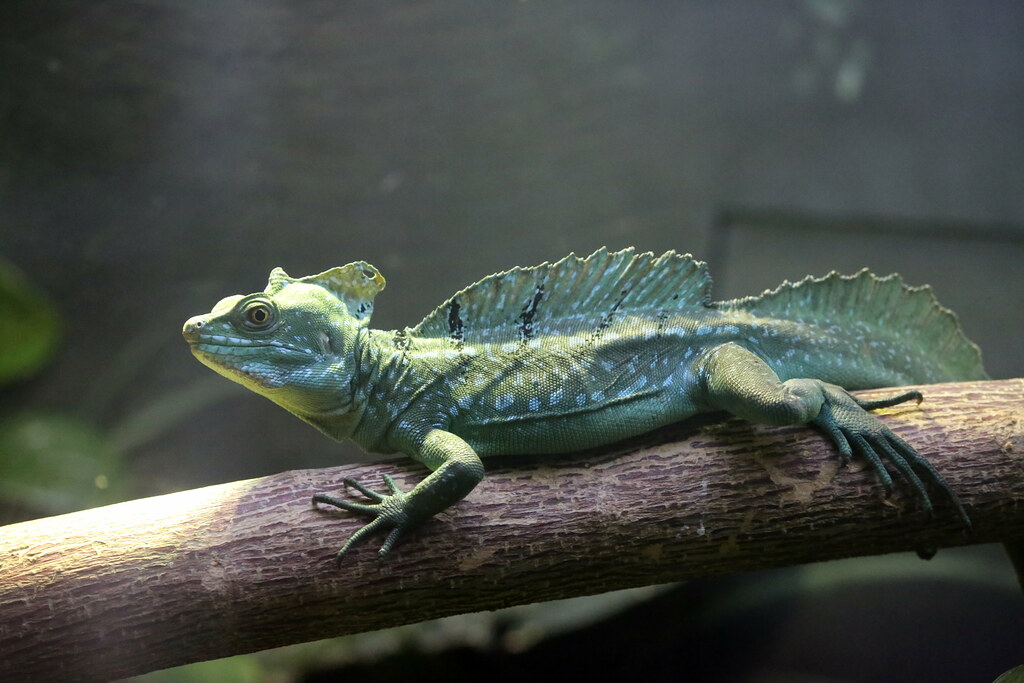
Basilisk lizards have become increasingly popular in the exotic pet trade, particularly the striking green basilisk with its dragon-like appearance. Keeping these specialized reptiles in captivity presents significant challenges, as they require spacious enclosures that accommodate both their arboreal nature and semi-aquatic lifestyle. A proper basilisk habitat must include tall climbing structures, dense vegetation for security, and a large water feature deep enough for swimming but designed to prevent drowning. Maintaining appropriate temperature gradients (75-85°F) and high humidity (70-80%) is crucial for their health in captivity.
Responsible keepers provide varied diets including gut-loaded insects, small vertebrate prey, and fresh plant matter to reflect their omnivorous natural diet. It’s worth noting that while captive basilisks may occasionally demonstrate their water-running ability in sufficiently large water features, they rarely have the space to fully express this remarkable behavior as they would in the wild.
Scientific Research and Biomimicry Applications
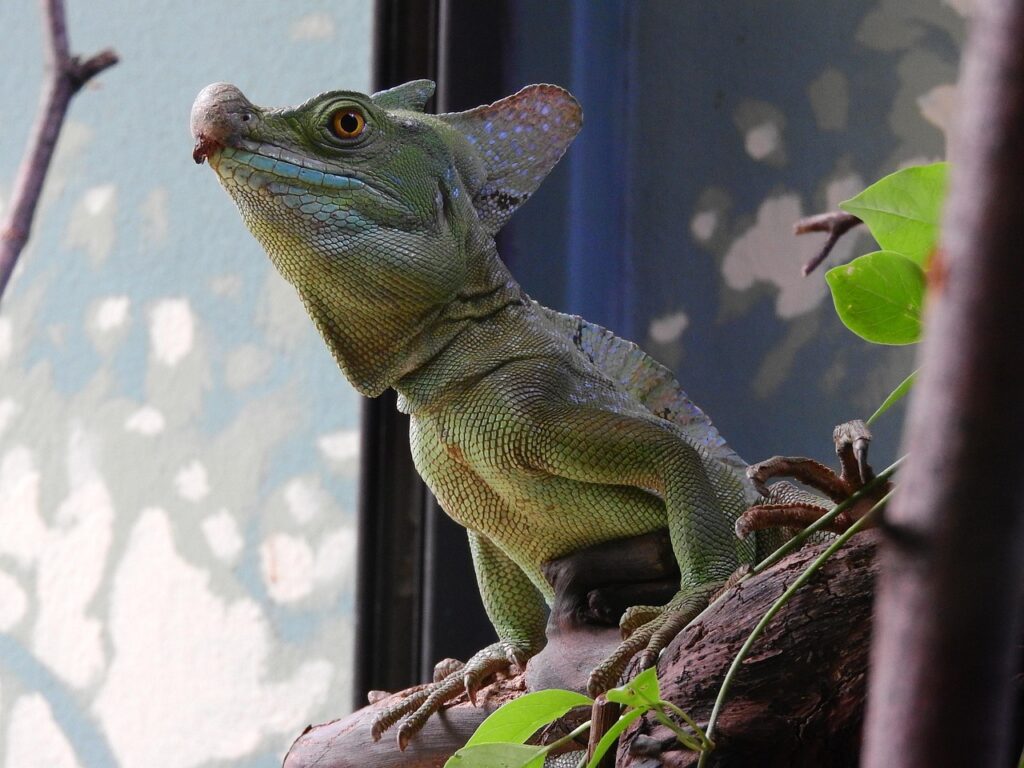
The basilisk’s water-running ability has fascinated scientists and engineers, inspiring research that extends beyond pure biology into practical applications. Biomechanics researchers have conducted detailed studies using high-speed cameras to analyze the precise movements and forces involved in this locomotion, revealing that basilisks generate both upward slapping forces and horizontal rowing forces with each step. These insights have inspired biomimetic designs, including robots that can move across water surfaces using principles derived from basilisk locomotion. Such research has potential applications in search and rescue operations, environmental monitoring in flood zones, and amphibious vehicle design.
The water-running adaptation also provides valuable case studies for evolutionary biologists examining how complex biomechanical adaptations develop. Perhaps most intriguingly, materials scientists study the structure of basilisk foot scales to develop water-repellent surfaces with applications ranging from waterproof textiles to self-cleaning materials.
Cultural Significance and Mythology
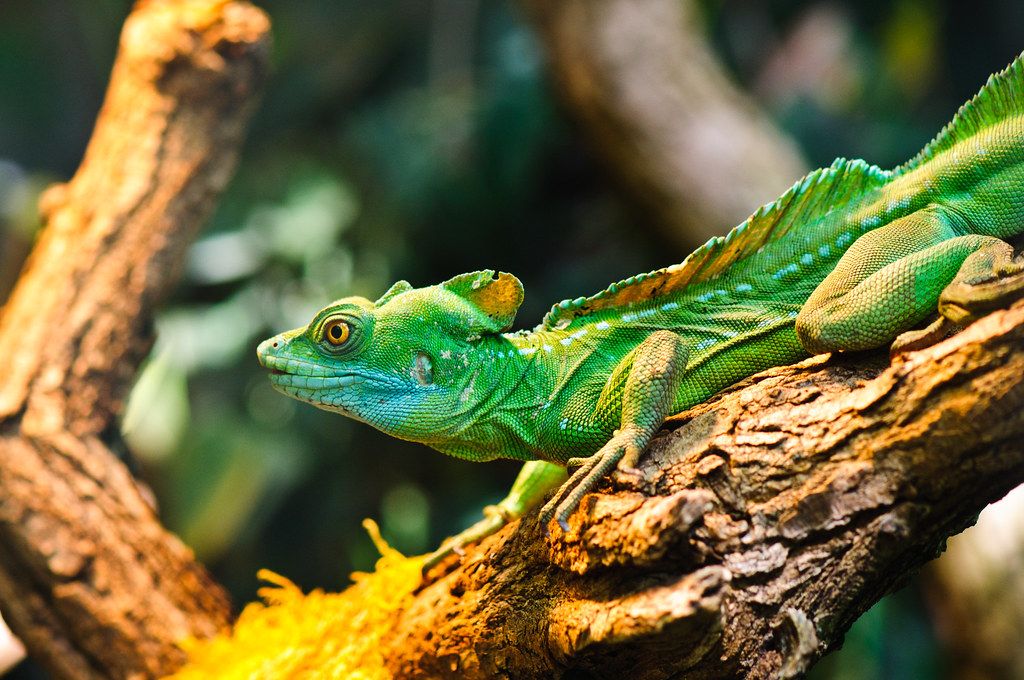
The basilisk has inspired awe and mythology across various cultures, with its remarkable abilities often interpreted through supernatural lenses. The name “basilisk” itself comes from ancient Greek mythology, where it referred to a legendary reptile said to have the power to cause death with a single glance. While the modern basilisk lizard bears little resemblance to this mythical creature, the name reflects humanity’s enduring fascination with unusual reptiles.
In indigenous Central American cultures, basilisks sometimes featured in folklore as forest spirits or transformation figures. The water-walking ability particularly cemented the lizard’s place in modern popular culture, with appearances in nature documentaries consistently drawing amazed reactions from viewers. Their biblical nickname continues to make them powerful symbols in nature writing and environmental education, where they often serve as ambassadors for the wonders of evolutionary adaptation and the surprising capabilities that can emerge through natural selection.
The basilisk lizard’s ability to walk on water represents one of nature’s most spectacular evolutionary innovations—a perfect example of how natural selection can produce seemingly impossible adaptations. Through specialized anatomical features, precise biomechanics, and the clever exploitation of physical principles, these remarkable reptiles perform what appears magical but is actually a sophisticated survival strategy millions of years in the making.
As rainforest habitats face increasing threats from human activity, the future of these water-walking wonders depends on conservation efforts that preserve not just the species itself but the complex ecosystems they inhabit. The basilisk reminds us that in nature, the line between the miraculous and the evolved is often simply a matter of understanding the ingenious solutions that emerge through evolutionary processes working across vast timescales.

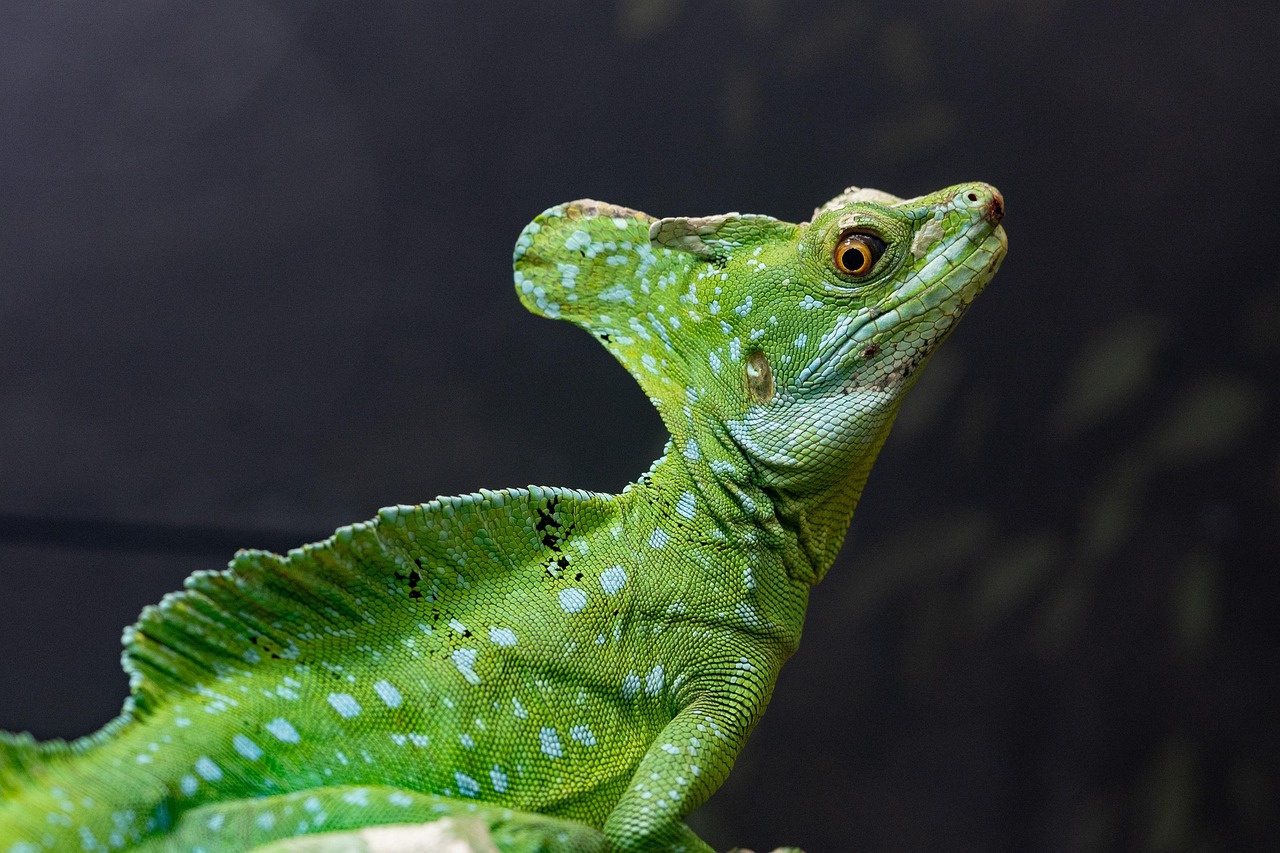
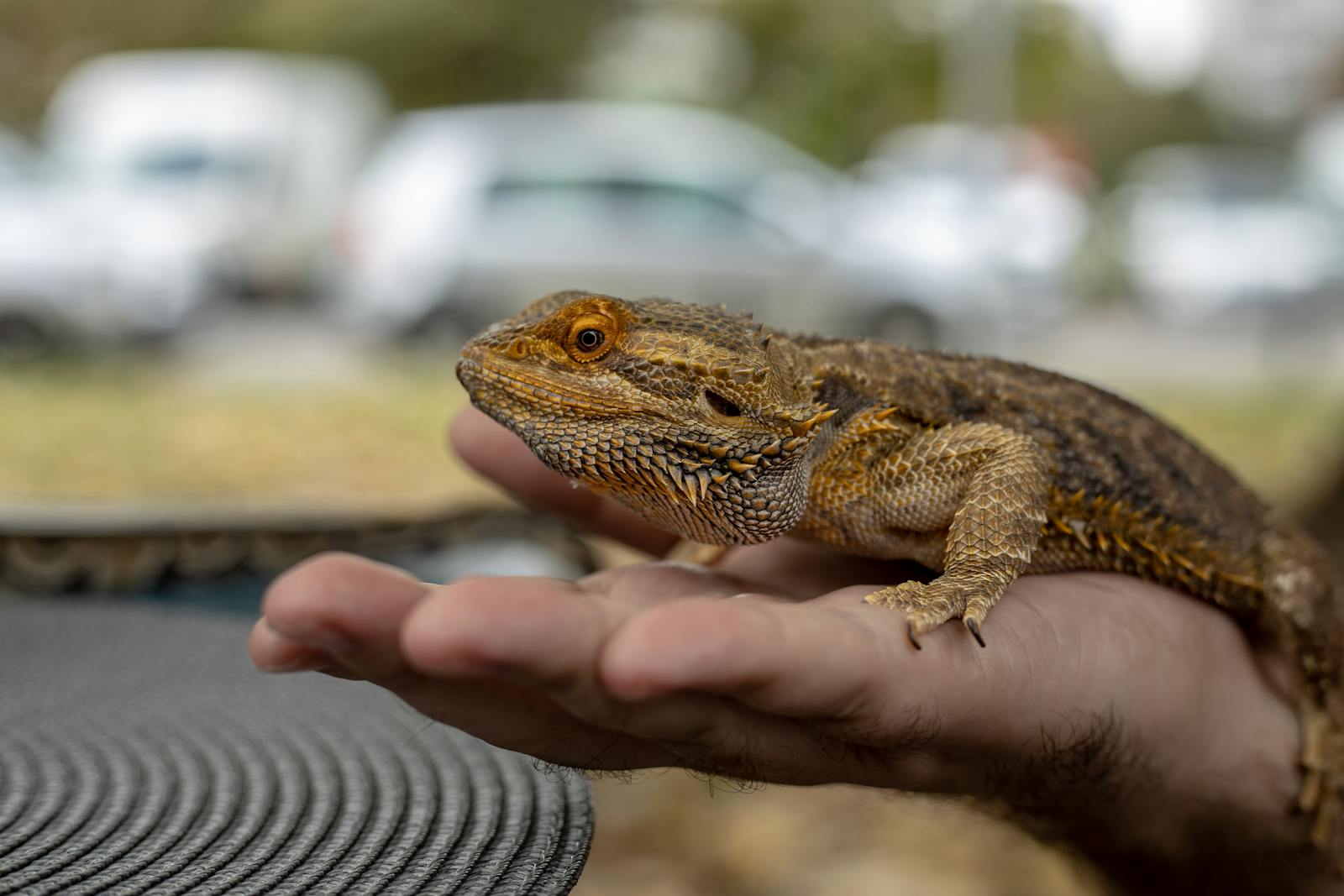

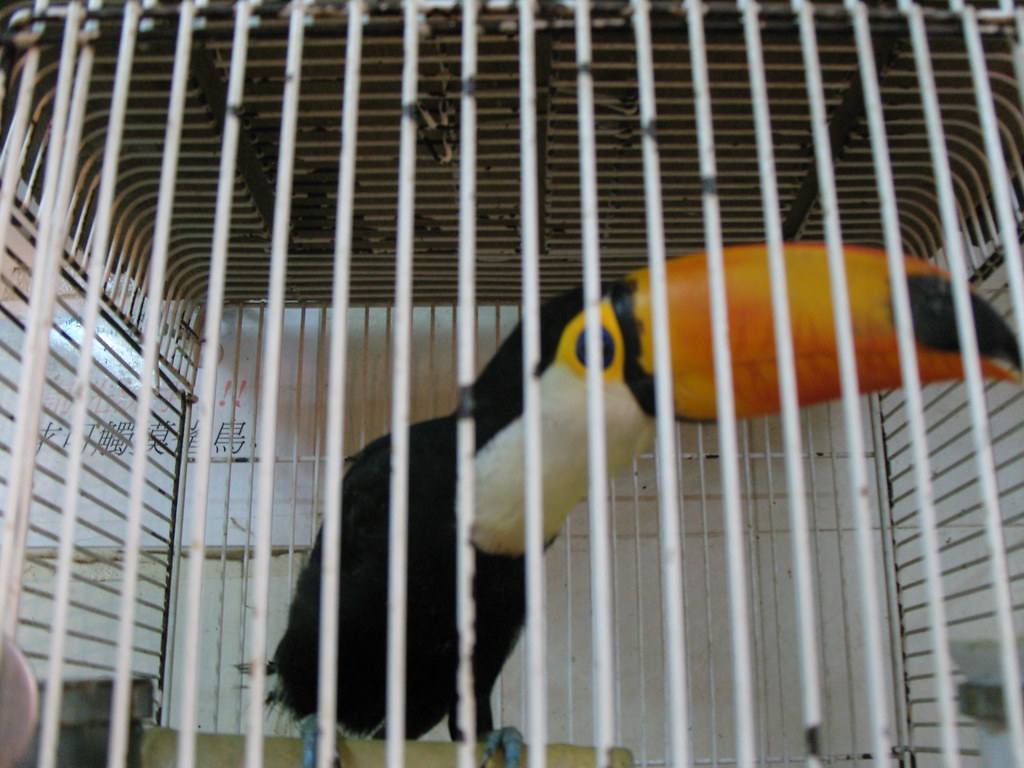
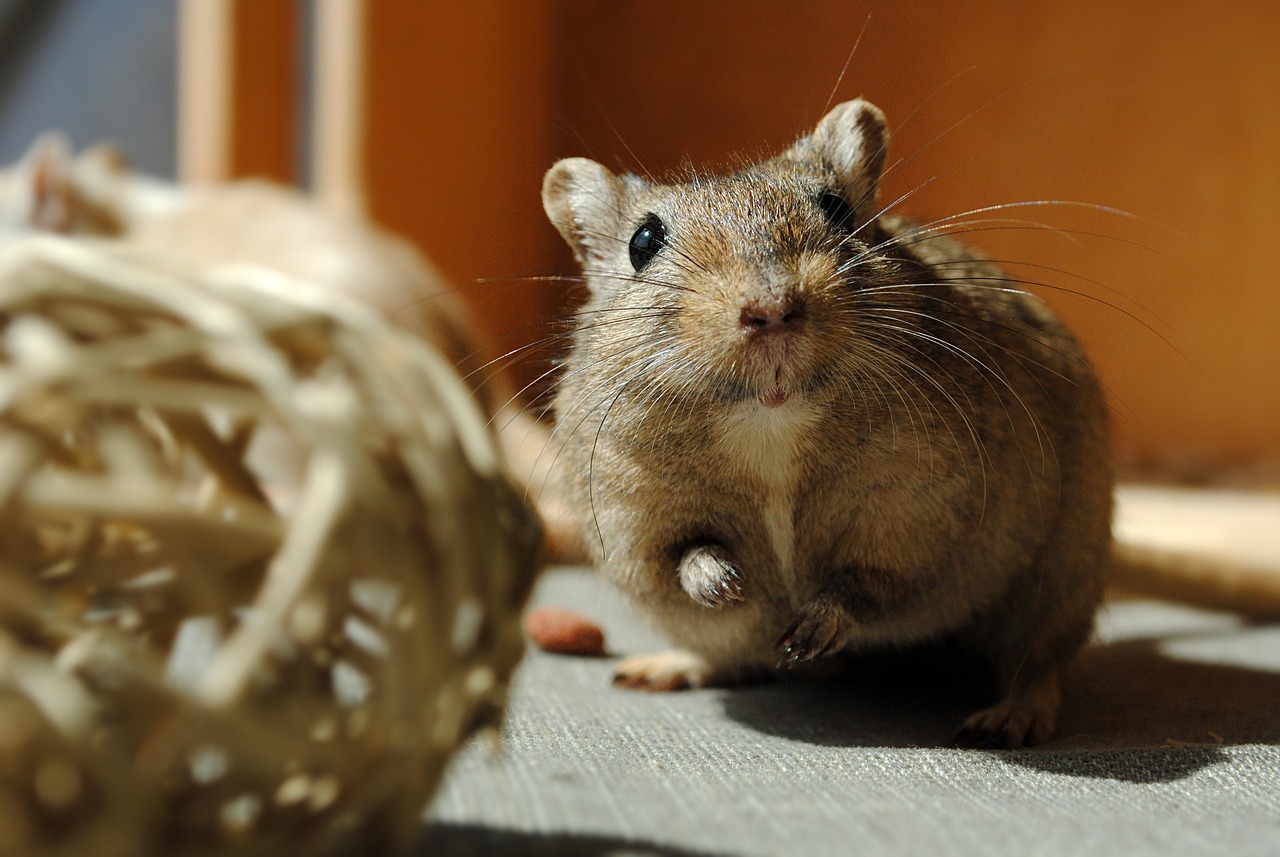
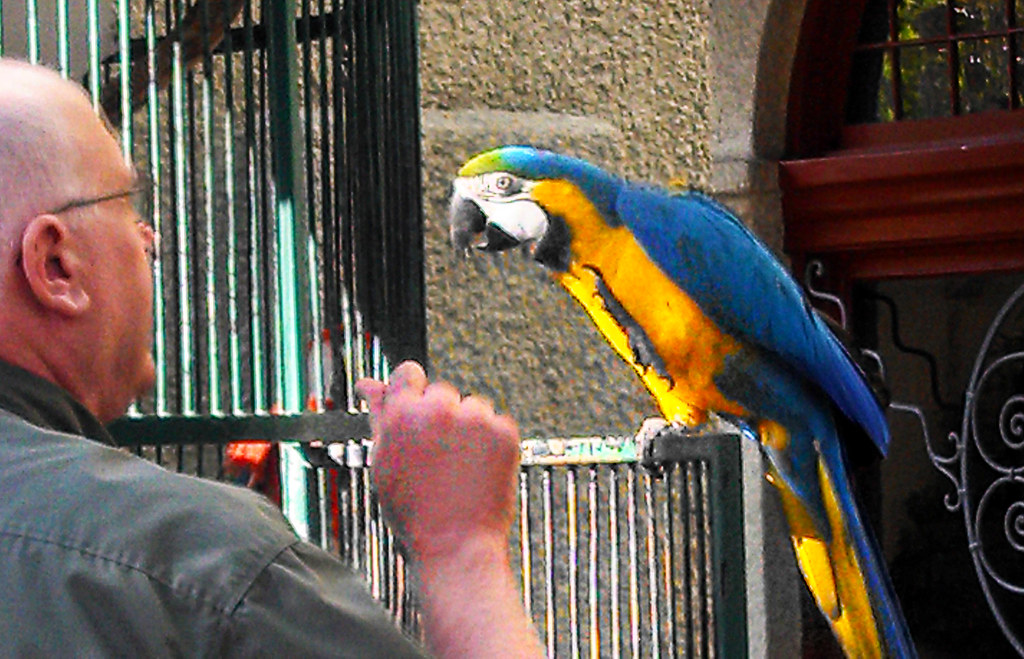
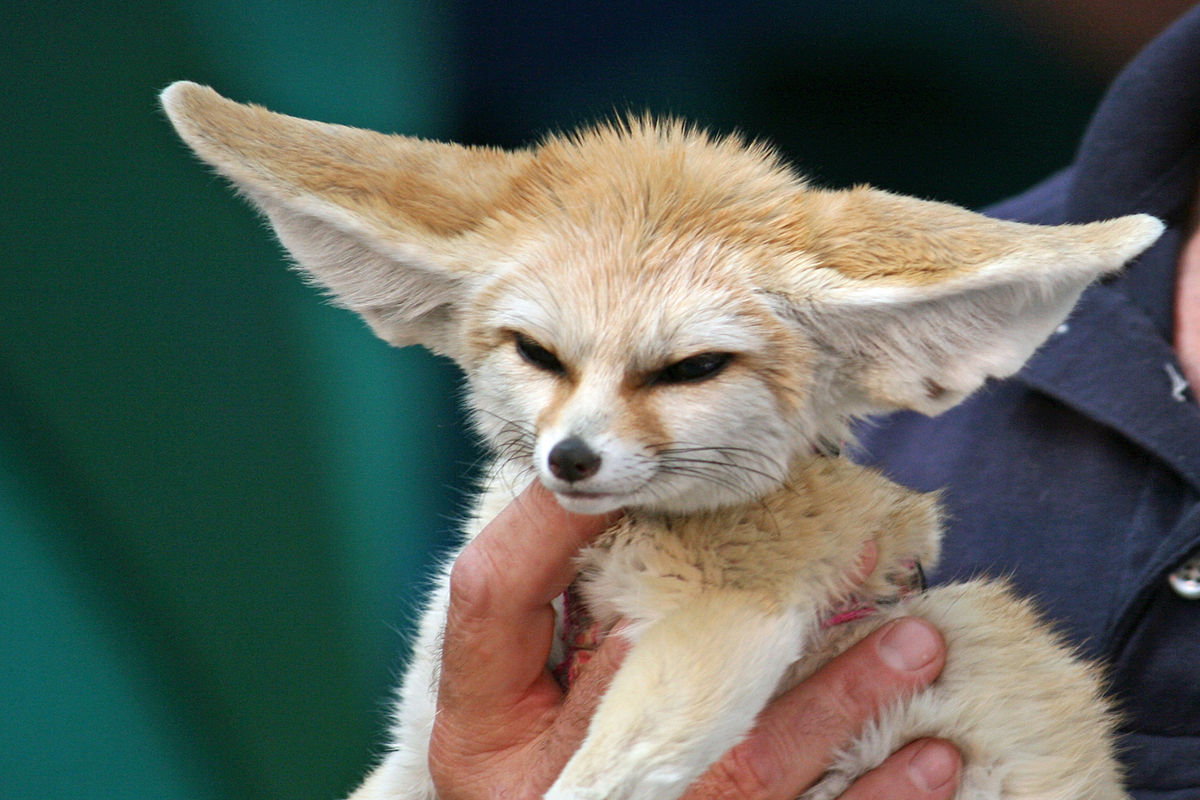
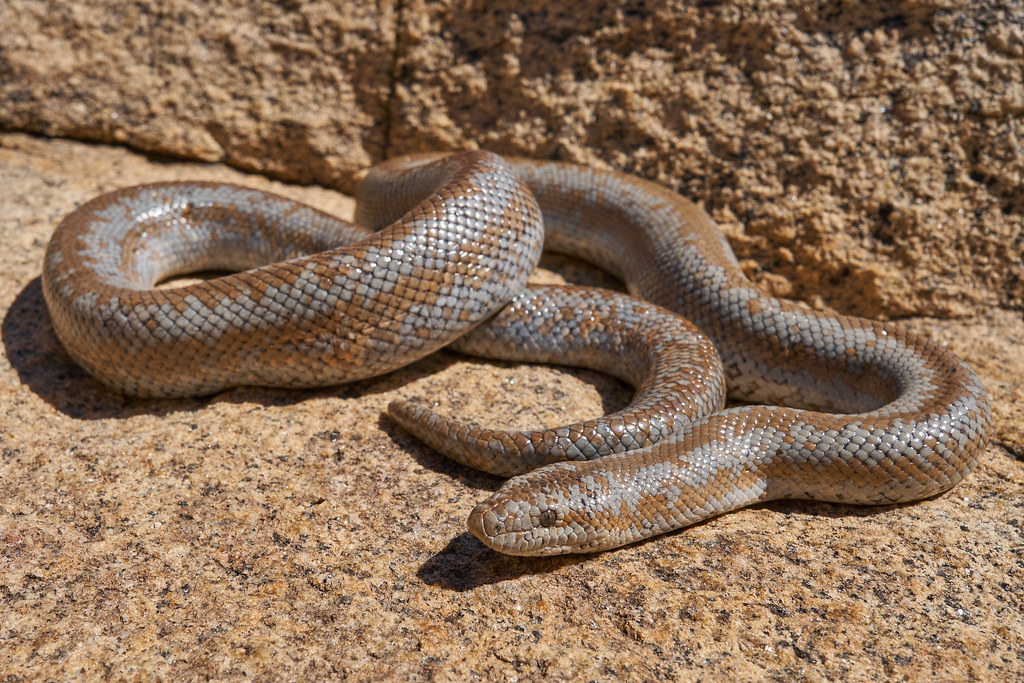
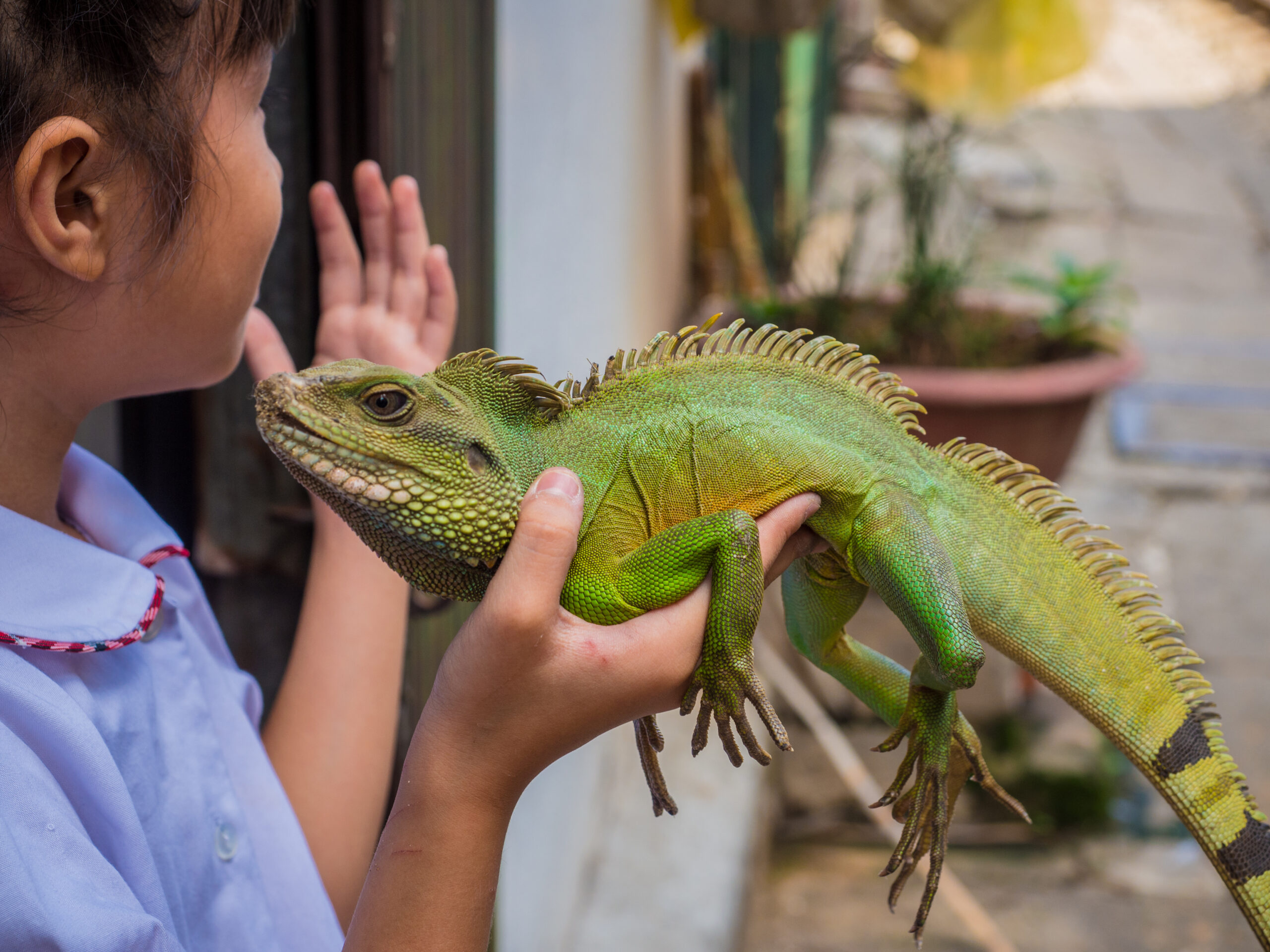

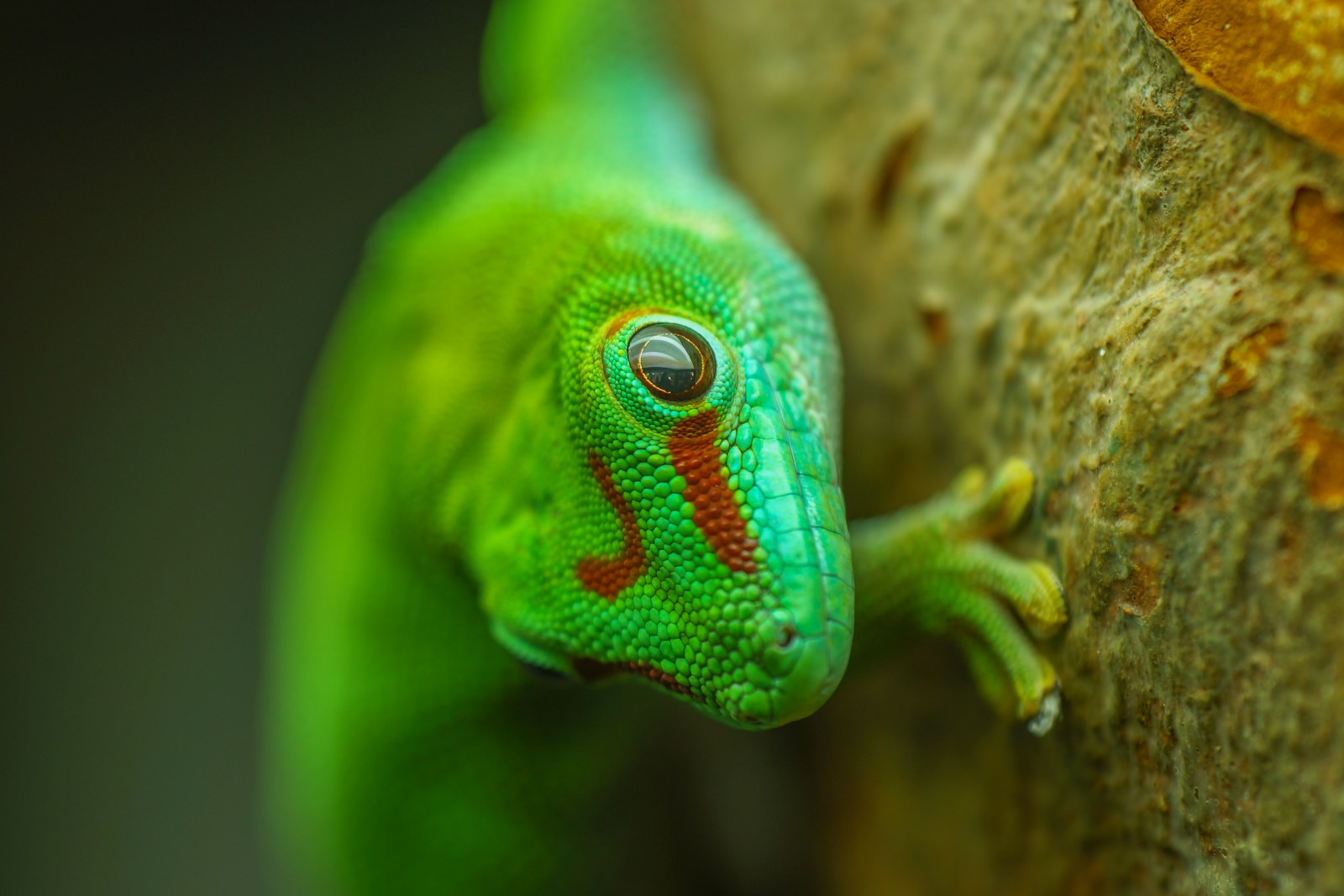




Leave a Reply